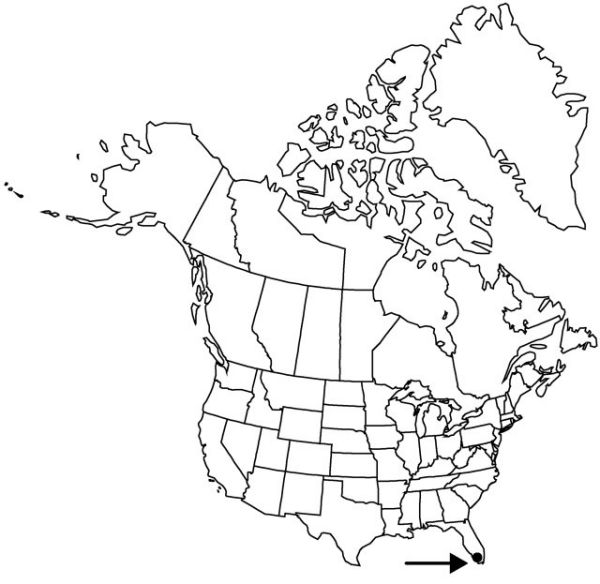Difference between revisions of "Agave desmettiana"
Hamburger Garten- Blumenzeitung 22: 217. 1866.
FNA>Volume Importer |
imported>Volume Importer |
||
| (One intermediate revision by the same user not shown) | |||
| Line 8: | Line 8: | ||
}} | }} | ||
|common_names=Regel agave | |common_names=Regel agave | ||
| + | |special_status={{Treatment/ID/Special_status | ||
| + | |code=I | ||
| + | |label=Introduced | ||
| + | }} | ||
|basionyms= | |basionyms= | ||
|synonyms={{Treatment/ID/Synonym | |synonyms={{Treatment/ID/Synonym | ||
| Line 28: | Line 32: | ||
|elevation=0 m | |elevation=0 m | ||
|distribution=Fla.;Mexico. | |distribution=Fla.;Mexico. | ||
| + | |introduced=true | ||
|discussion=<p><i>Agave desmettiana</i> is an attractive and frequently cultivated plant, probably native to Sinaloa, Mexico. The species may be an ancient cultivar, possibly derived from <i>A. sisalana</i> or A. kewensis Jacobi. The plant reproduces only by vegetative means; capsules and seeds have never been seen. H. S. Gentry (1982) indicated that the plant produces a fine but weak fiber. In Mexico it is grown only as an ornamental.</p> | |discussion=<p><i>Agave desmettiana</i> is an attractive and frequently cultivated plant, probably native to Sinaloa, Mexico. The species may be an ancient cultivar, possibly derived from <i>A. sisalana</i> or A. kewensis Jacobi. The plant reproduces only by vegetative means; capsules and seeds have never been seen. H. S. Gentry (1982) indicated that the plant produces a fine but weak fiber. In Mexico it is grown only as an ornamental.</p> | ||
|tables= | |tables= | ||
| Line 51: | Line 56: | ||
|publication title=Hamburger Garten- Blumenzeitung | |publication title=Hamburger Garten- Blumenzeitung | ||
|publication year=1866 | |publication year=1866 | ||
| − | |special status= | + | |special status=Introduced |
| − | |source xml=https:// | + | |source xml=https://bitbucket.org/aafc-mbb/fna-data-curation/src/2e0870ddd59836b60bcf96646a41e87ea5a5943a/coarse_grained_fna_xml/V26/V26_943.xml |
|genus=Agave | |genus=Agave | ||
|species=Agave desmettiana | |species=Agave desmettiana | ||
Latest revision as of 21:18, 5 November 2020
Plants short-stemmed, commonly suckering, trunk less than 0.5 m; rosettes not cespitose, 7–9 × 7–9 dm. Leaves spreading and arching, 50–90 × 7–12 cm; blade green, not cross-zoned, linearlanceolate, firm, adaxially guttered, abaxially slightly convex; margins straight, finely and sparsely fibrous, typically unarmed, teeth single prickles when present, 1–2 mm, 1–2+ cm apart; apical spine dark brown, subulate, 2–3 cm. Scape 2.5–3 m. Inflorescences paniculate, compact, often bulbiferous; bracts persistent, triangular, 0.5–2 cm; lateral branches 20–36, ascending, comprising distal 1/2–2/3 of inflorescence, longer than 10 cm. Flowers 15–21 per cluster, erect, 4–6 cm; perianth pale yellow, tube salverform, 10–12 × 14–17 mm, limb lobes erect, equal, 13–15 mm; stamens long-exserted; filaments inserted near top of perianth tube, erect, yellow, 3–4 cm; anthers yellow, 13–26 mm; ovary 1.5–2.5 cm, neck not constricted, 1–3 mm. Capsules not seen. Seeds unknown. 2n = 60.
Phenology: Flowering late spring–early summer.
Habitat: Sandy places along roadsides and in hammocks
Elevation: 0 m
Distribution

Introduced; Fla., Mexico.
Discussion
Agave desmettiana is an attractive and frequently cultivated plant, probably native to Sinaloa, Mexico. The species may be an ancient cultivar, possibly derived from A. sisalana or A. kewensis Jacobi. The plant reproduces only by vegetative means; capsules and seeds have never been seen. H. S. Gentry (1982) indicated that the plant produces a fine but weak fiber. In Mexico it is grown only as an ornamental.
Selected References
None.